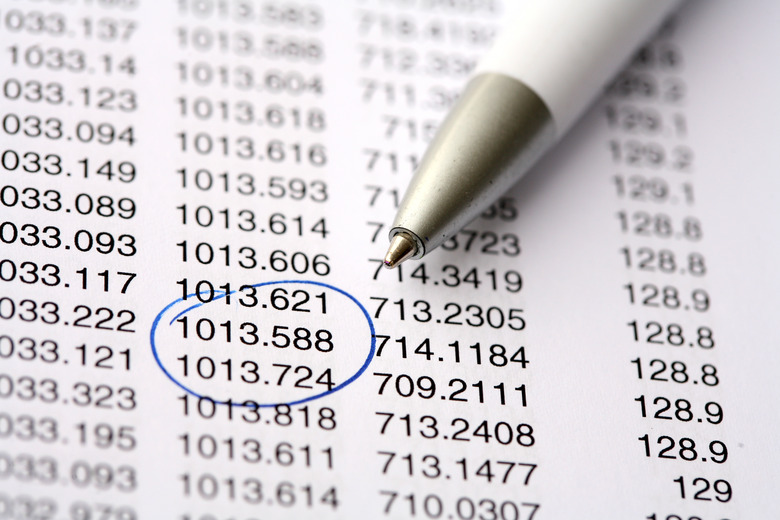How To Convert A Decimal To A Whole Number
Technically, a decimal only refers to numbers to the right of a decimal point — for example, .325. Anything to the right of a decimal point automatically has a value smaller than 1, so it can't represent a whole number. But if there's something to the left of the decimal point, too – for example, 2.325 — the decimal can be part of what's called a mixed number, or a whole number with a fractional reminder.
TL;DR (Too Long; Didn't Read)
Write the whole number to the left of the decimal point. Then convert everything to the right of the decimal point into fraction form. Your result is a mixed number, or a combination of a whole number and a fraction.
Finding the Whole Number
Finding the Whole Number
If your decimal number contains a whole number, it'll be obvious: that whole number is already written to the left of the decimal point. So if your decimal value is 5.627, the whole number is 5; if your decimal value is 9.5, the whole number is 9; and so on. Remember, if there's no non-zero number to the left of the decimal point, there is no whole number.
Writing the Decimal as a Fractional Remainder
Writing the Decimal as a Fractional Remainder
For decimal values that do include a whole number to the left of the decimal point, you can rewrite the decimal as a mix of the whole number and a fractional remainder. Remember, the whole number represents everything to the left of the decimal point, while the fractional remainder represents everything to the right of the decimal point.
To get the fractional reminder, write everything to the right of the decimal point as the numerator, or top number, of a fraction. Then write a "1" in the denominator, or bottom number of the fraction, followed by as many zeroes as there are digits to the right of the decimal point. So for example, if your starting decimal value is 3.625, you'd save the "3" as a whole number, then write the fraction 625/1000 to represent everything to the right of the decimal point. So your answer would be 3 625/1000.
Note that there are three digits to the right of the decimal point, so you write 1, followed by three zeroes, in the denominator of the fraction.
Reduce Your Fractional Remainder
Reduce Your Fractional Remainder
The fractional remainder 625/1000 is pretty unwieldy, but it doesn't have to stay that way. By reducing that remainder to lowest terms, you'd end up with 5/8 as the fractional remainder, or 3 5/8 as your final answer.
Another Example
Another Example
Here's another example of writing a decimal number as a combination of whole number and fractional remainder. consider the decimal number 5.75: When you conserve the whole number and write the decimal as a fraction, you get 5 75/100. You can then reduce the fraction to lowest terms to get 5 3/4. If you're good with fractions, you might even have noticed that .75 is the same as 3/4, in which case you can simply write the result as 5 3/4 straight from the start.
Cite This Article
MLA
Maloney, Lisa. "How To Convert A Decimal To A Whole Number" sciencing.com, https://www.sciencing.com/convert-decimal-whole-number-8539196/. 26 April 2018.
APA
Maloney, Lisa. (2018, April 26). How To Convert A Decimal To A Whole Number. sciencing.com. Retrieved from https://www.sciencing.com/convert-decimal-whole-number-8539196/
Chicago
Maloney, Lisa. How To Convert A Decimal To A Whole Number last modified March 24, 2022. https://www.sciencing.com/convert-decimal-whole-number-8539196/
